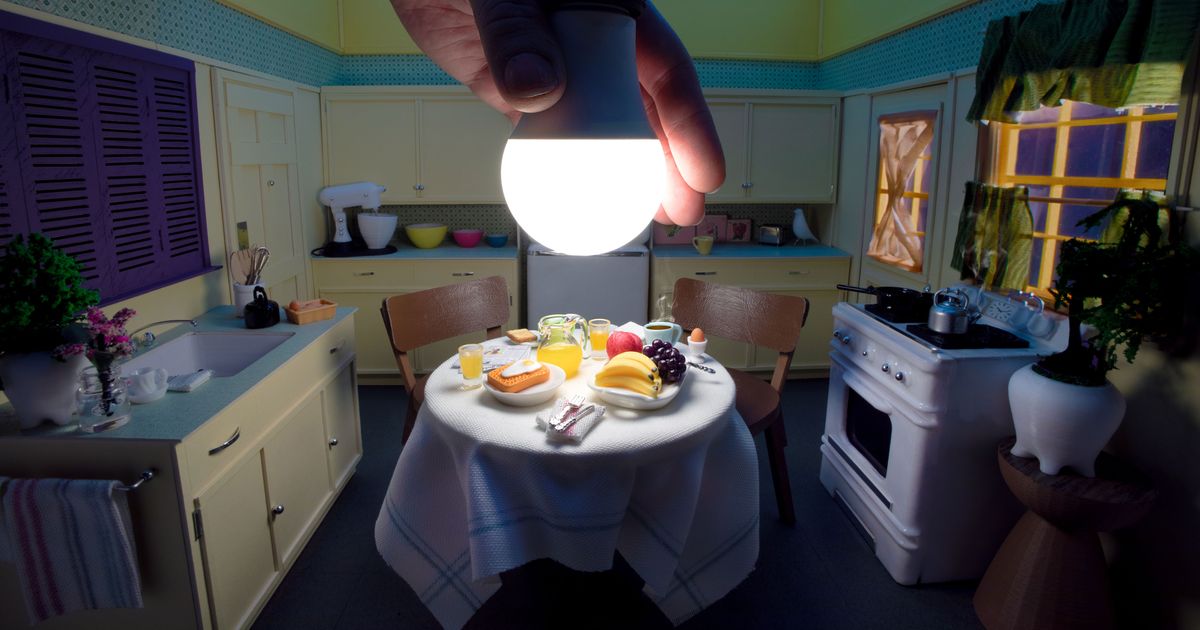Core Concepts
LED lighting presents a complex reality with challenges in color rendering, reliability, and compatibility, despite its energy efficiency and environmental benefits.
Abstract
LED lighting, once hailed as a revolutionary advancement in energy-efficient illumination, is now facing scrutiny for its performance issues. Despite the promise of brilliant illumination at reduced costs, users are experiencing flickering lights, color discrepancies, and overall dissatisfaction with LED bulbs. The transition to LEDs has brought about unexpected complications and frustrations for consumers who expected a seamless upgrade from traditional incandescent bulbs. The article delves into the intricacies of LED technology, highlighting the disconnect between the theoretical benefits and practical challenges faced by users.
The author recounts personal experiences with LED bulbs malfunctioning or failing to meet expectations in various settings. From dimming issues to color inaccuracies, the narrative paints a vivid picture of the shortcomings associated with modern LED lighting solutions. The shift towards LEDs as the primary form of artificial lighting is explored through anecdotes that showcase the frustrations and limitations of this evolving technology.
Furthermore, the article delves into technical aspects such as color temperature, color-rendering index (CRI), and light output metrics that influence users' perceptions of LED lighting quality. The complexities involved in selecting appropriate LED bulbs based on lumens, Kelvin temperature, and CRI ratings add layers of confusion for consumers seeking optimal indoor illumination.
Despite the ecological and economic advantages of LEDs over traditional incandescent bulbs, their implementation raises questions about user experience, aesthetic preferences, and technological reliability. The narrative captures a nuanced perspective on the multifaceted nature of LED lighting's impact on daily life and visual perception.
There’s Something Off About LED Bulbs
Stats
"LEDs were going to be different."
"For 60 watts’ worth of incandescent light, you’re looking for about 800 lumens of LED output."
"Some colors will be missing or just different."
"A bulb 'with its proper proportions of violet light as determined by our natural illuminant the sun is to be desired and not avoided.'"
"Adding warm tones to a blue LED requires extra material and effort."
Quotes
"LEDs can be broken even when they appear to be working."
"It’s still on. You still have light coming out."
"The impetus is on you to decide when things have started to look uncanny."
Key Insights Distilled From
by Tom Scocca at nymag.com 03-30-2023
https://nymag.com/strategist/article/led-light-bulbs-investigation.html
Deeper Inquiries
How can manufacturers address consumer confusion regarding LED bulb specifications?
Manufacturers can address consumer confusion regarding LED bulb specifications by providing clear and comprehensive information on the packaging. This includes details such as color temperature, lumens, color-rendering index (CRI), and any other relevant metrics that help consumers make informed decisions. Additionally, manufacturers can offer educational materials or online resources to explain the significance of these specifications and how they impact the quality of light emitted by the bulbs. By improving transparency and accessibility to information, manufacturers can empower consumers to choose the right LED bulbs for their needs.
What role does human perception play in evaluating the quality of artificial lighting?
Human perception plays a crucial role in evaluating the quality of artificial lighting as it directly influences how individuals experience and interact with their surroundings. The color temperature, CRI, and intensity of light all affect how colors appear, textures are perceived, and overall ambiance is felt in a space. For example, warmer tones may create a cozy atmosphere, while cooler tones can evoke a sense of alertness or productivity. Understanding how different lighting characteristics impact human perception allows designers and manufacturers to create lighting solutions that enhance comfort, aesthetics, and functionality in various settings.
How might advancements in LED technology impact future trends in interior design?
Advancements in LED technology are likely to have a significant impact on future trends in interior design by offering more flexibility, efficiency, and creativity in lighting design. With tunable LEDs that allow for customizable color temperatures and dimming options, designers can create dynamic environments that cater to specific moods or activities. The ability to mimic natural sunlight or adjust lighting levels based on time of day can improve occupant well-being and productivity. Additionally, advancements in LED filaments and glass coatings enable designers to replicate the warm glow of incandescent bulbs while still benefiting from energy efficiency. As LED technology continues to evolve, we can expect to see innovative lighting designs that enhance aesthetics and functionality in interior spaces.
0
